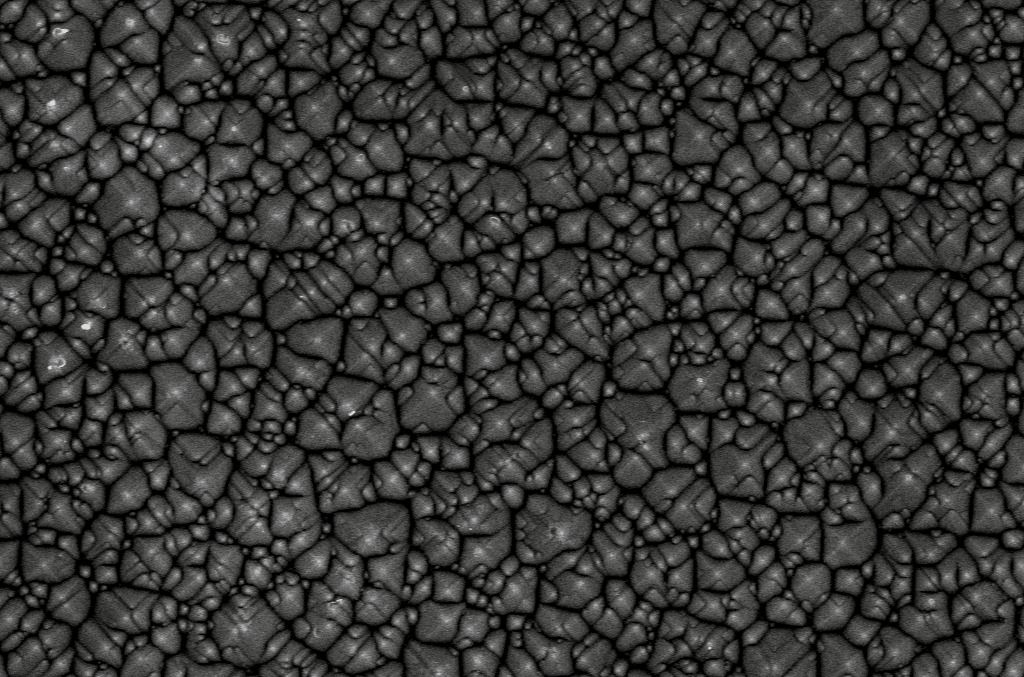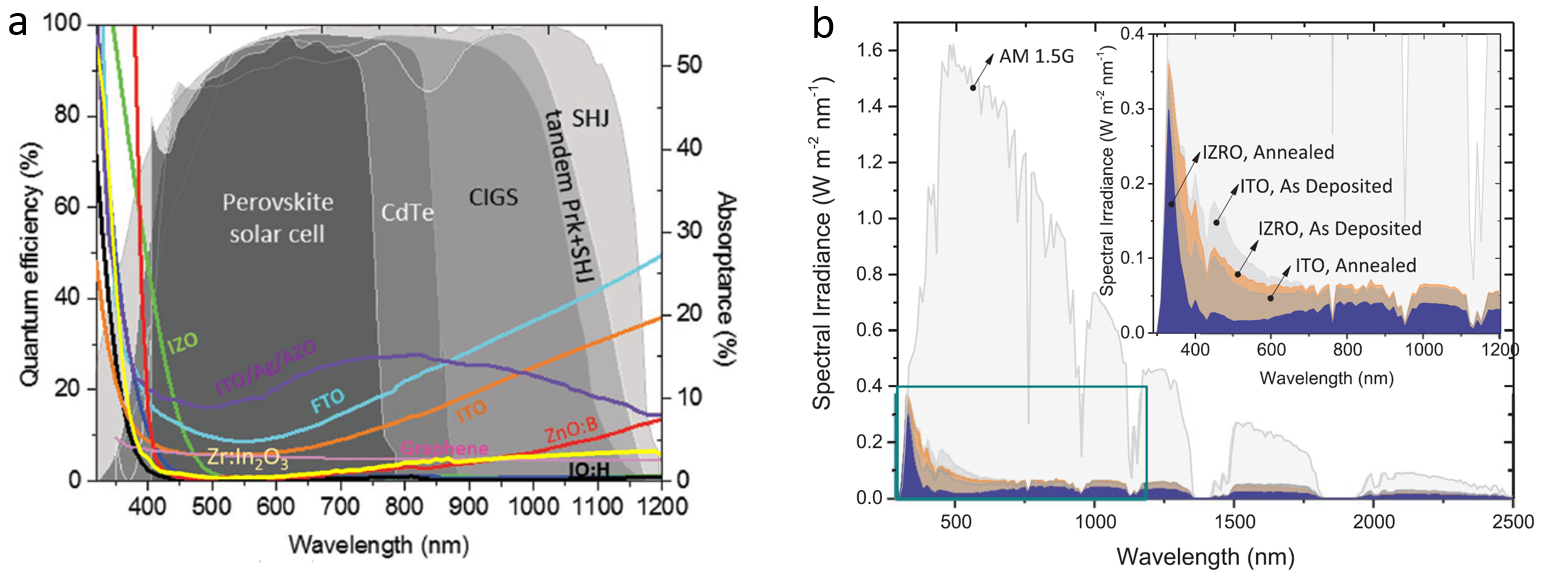


09 March, 2020

KPV-LAB and Sargent Group form the University of Toronto achieved one of the highest power conversion efficiency (PCE) for mechanically stacked (so-called four-terminal, 4-T) perovskite/silicon tandems thanks to two major advancements;
Innovatively, our collaborative team developed novel boosted solvent extraction technique which enables a homogeneous and smooth morphology in thick perovskite films, which is needed for efficient light harvesting.
We improve the NIR response of the perovskite top cells by utilizing the IZRO transparent electrodes to replace the conventionally used ITO. One of the key enablers of high NIR transmittance of the highly-conductive IZRO TCOs is suppressed parasitic free carrier absorption, for a given free carrier density, by virtue of its enhanced carrier mobility.

Figure. The sketch of the perovskite and silicon heterojunction subcells used in this study together with EQE of the tandem devices. (Reference: Chen, Bin, et al. Nature Communications 11.1 (2020): 1-9.)
The figure below shows the absorptance of the IZRO films together with other state-of-the-art TCOs in literature frequently used for efficient devices. As can be seen, IZRO has comparable near-infrared optical transparency with H: doped In2O3 (IO:H)- but more stable than IO:H. This makes IZRO electrodes promising not only for tandem application but also for NIR sensitive quantum dot and organic solar cells and LEDs.
Further, IZRO show much lower parasitic absorptance in the blue region of the spectra due to its high crystallinity which can bring further advancements in tandem applications.

Figure. a) Quantum efficiency of some PV technologies together with absorptance values of the state-of-the-art TCOs. (Reproduced from M. Morales-Masis, et al., Advanced Electronic Materials 2017). b) Solar-weighted absorbance spectra of the sputtered IZRO and ITO films measured with the integrating sphere. (Reproduced from E. Aydin, et al., Advanced Functional Materials 2019, 0, 1901741.)
This technique aims the fast removal of excess solvent coupled with low-speed spinning that could potentially produce thicker films with a homogenous morphology.
In this approach, we raised the spin-coating speed to higher RPM precisely 1 s before anti-solvent dripping. This was intended to increase the lateral hydrodynamic flow and evaporation rate of the mixed solvents to facilitate the rapid nucleation of the intermediate phase.
The improved surface morphology of BSE films enables a better photovoltaic performance and paves the way for subsequent studies.

Figure. Schematic of boosted solvent extraction (BSE) and normal spin coating process. (Reference: Chen, Bin, et al. Nature Communications 11.1 (2020): 1-9.)
The perovskite front cells need to have a very high absorption of above-gap photons; and the highest possible transmittance below-gap. The latter requirement indicates that both the front and back electrodes of the top cell need to have exceptional transparency in the near-infrared (NIR) and short-wavelength infrared. The first criterion – of complete above-bandgap absorption – needs to be accomplished in a single pass through the top-cell active layer, i.e. the usual double-pass configuration in single-junction cells is not available to the front cell in tandems.
Typical perovskite cells can make do with a 300 nm active layer thickness when they benefit from the double pass. Our modeling showed that to achieve similar absorption in a single pass, a 700 nm thick active layer – one that is morphologically homogeneous and has an excellent charge carrier extraction length – would be required.
Carrier collection in these films – as made – is limited by an insufficient electron diffusion length; however, we further find that adding a Lewis base reduces the trap density and enhances the electron-diffusion length to 2.3 µm, enabling a 19% PCE for 1.63 eV semi-transparent perovskite cells having an average near-infrared transmittance of 85%.
To read more about the IZRO electrodes please check the publication in by Erkan Aydin et al. (Zr-Doped Indium Oxide (IZRO) Transparent Electrodes for Perovskite-Based Tandem Solar Cells" Advanced Functional Materials 2019, 0, 1901741.)
To learn more about the boosted solvent extraction technique and advancement for 28.2% tandems check out publication by Bin Chen et al. ("Enhanced optical path and electron diffusion length enable high-efficiency perovskite tandems." Nature Communications 11.1 (2020): 1-9.)